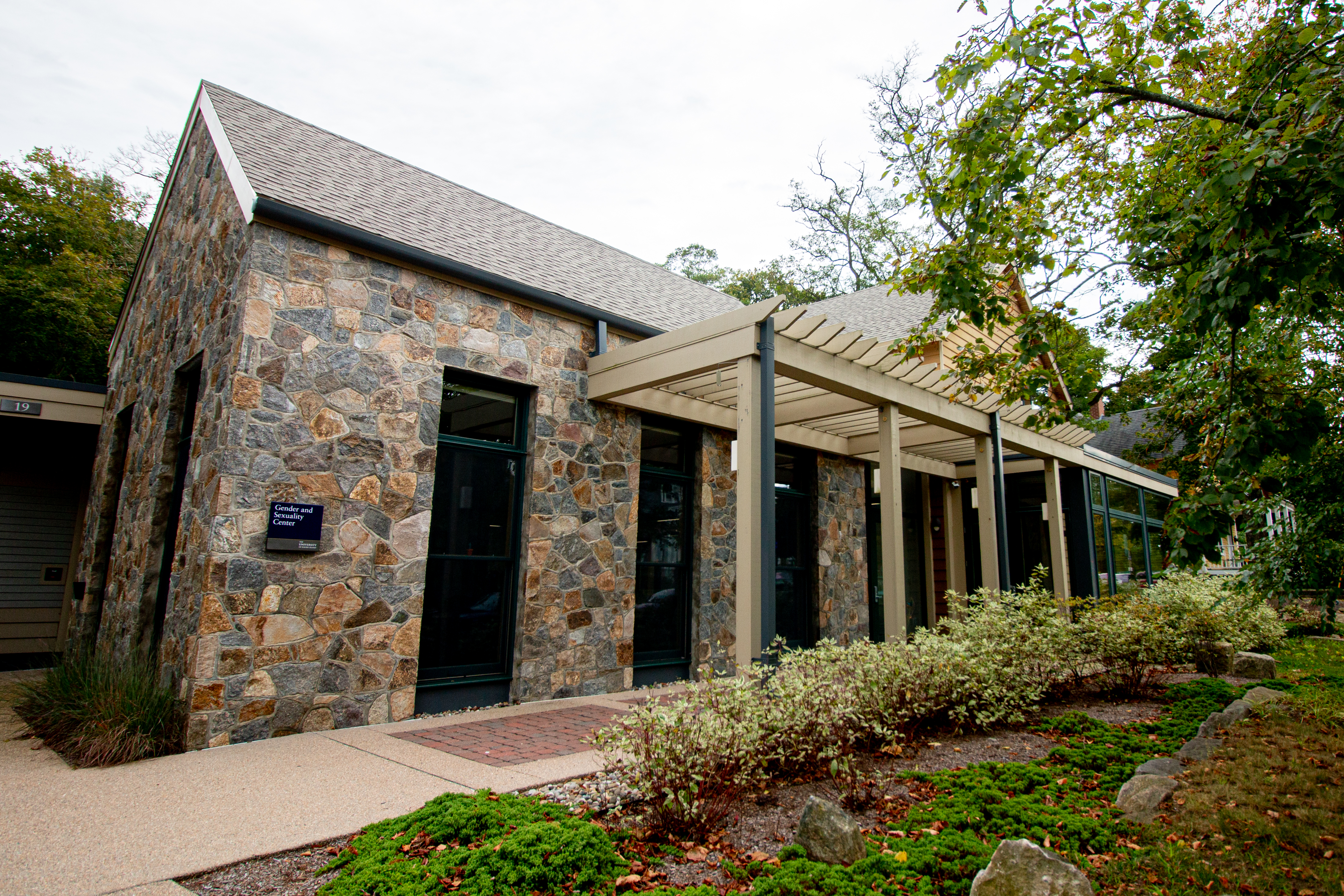The first gender and sexuality center in the country has big events planned for the month of October. Photo by Grace DeSanti.
The center will be hosting numerous events throughout the month of October
“People should know that they do have support, they have people who care about them and they have the resources. There are ways they can have a good life being exactly who they are and be loved for that.”
These are the words of Annie Russell, director of the Gender and Sexuality Center at the University of Rhode Island, which is the first building ever on a college-campus to be designed for the specific purpose of creating a community center for the LGBTQ+ community.
The plan for the building was put in motion in 2010 after students held a sit-in to protest the discrimination LGBTQ+ people were facing and the lack of adequate resources that other minority groups on campus had recieved.
For Emery Chobotor-Caya, a senior double majoring in psychology and gender women’s studies and the Creative Marketing Specialist, the existence of the Gender and Sexuality Center was a selling point to attend the University.
“My advisor in high school told me about [The Gender and Sexuality Center] and I was like ‘oh well I am going to join URI then because it seems like they have a really good LGBTQ+ center on campus’ and that was something that was important to me in looking at colleges,” said Chobotor-Caya.
The building serves to support, engage and advocate for the LGBTQ+ community on campus as well as educate the larger campus community about LGBTQ+ issues. According to Russell, it is facility is an essential part of a college campus.
“We know that LGBTQ+ folks have more difficulty in life because they’re marginalized and underrepresented, and that’s definitely no exception for college students,” Russell said. “When you are in college you are dealing with all these transitional issues and figuring out your whole life, what you are and what you want to be. College is a critical time for these kinds of services to be present. To be able to help a student to go from questioning or not really sure who they are to knowing very confidently who they are in a couple of years is why we do the work we do.”
This month the Gender and Sexuality Center is celebrating the process of coming out. The Center will host multiple events, including National Coming Out Day on Oct. 11, which is a campus-wide celebration with the goal that students “will see queerness everywhere.”
In addition, the Gender and Sexuality Center provides Safe Zone Training with the hope that students will take the workshop to increase awareness, build a network and improve the campus climate for those in the LGBTQ+ community.
The majority of the staff members at the center are students who play essential roles in the function of the facility. The budget given by the University allows for about 10 student staff members to work about 20 hours a week. All student employees start off being paid the state minimum wage, but their pay increases the longer they stay.

